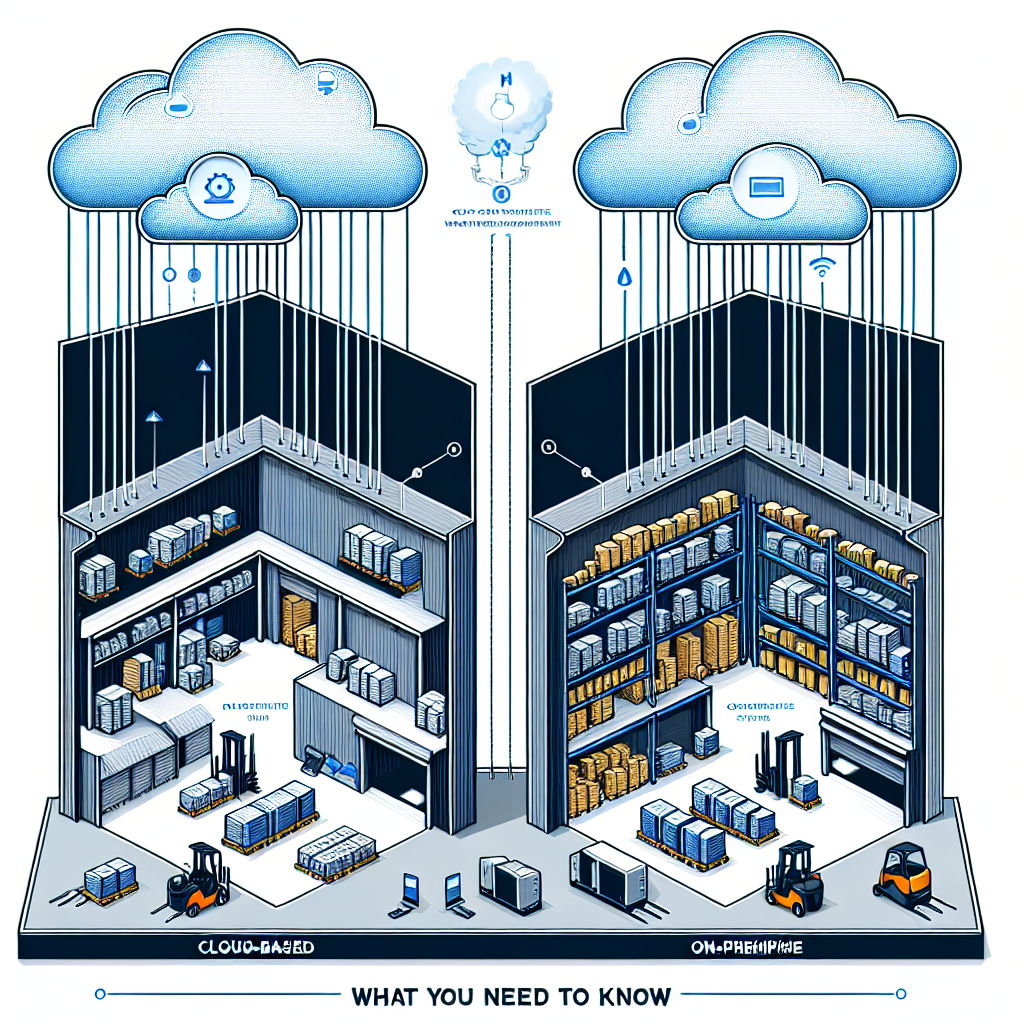In today’s fast-paced digital landscape, businesses continually seek ways to optimize operations, particularly in the logistics sector. Warehouse Management Systems (WMS) are crucial for managing inventory, ensuring order accuracy, and enhancing overall efficiency. But when it comes to choosing between cloud-based and on-premise WMS solutions, the decision can feel overwhelming. This article will illuminate the key differences, advantages, and considerations for businesses looking to streamline their warehouse operations.
Understanding Cloud-Based Warehouse Management Systems
Cloud-based WMS are software solutions hosted on remote servers, accessible via the internet. This means that users can access the system from anywhere, provided they have an internet connection. As technology evolves, this model has gained traction for several reasons.
Benefits of Cloud-Based WMS
-
Scalability: One of the standout features of cloud-based WMS is their scalability. Companies can start with the basic features and expand as needs grow, making them ideal for businesses of all sizes.
-
Cost-Effective: With cloud systems, companies can avoid hefty upfront hardware and installation costs. Instead, they typically pay a subscription fee, making budgeting easier.
-
Automatic Updates: Cloud providers are responsible for software updates and maintenance, ensuring users always have access to the latest features without disruptions.
- Accessibility and Collaboration: Cloud-based systems allow teams to access information in real-time from any location, fostering collaboration and providing a holistic view of warehousing operations.
Digging into On-Premise Warehouse Management Systems
On-premise WMS, as the name suggests, are installed directly on a company’s servers. While they have been the traditional choice for many businesses, their relevance continues to be debated.
Advantages of On-Premise WMS
-
Control and Customization: On-premise systems offer businesses complete control over their software environment. This can be beneficial for firms with specific operational needs that require extensive customization.
-
Data Security: On-premise solutions allow companies to manage their data internally, which can be a consideration for those in highly regulated industries or concerned about data privacy.
-
Performance: For businesses with stable internet access, on-premise WMS can offer faster performance since they rely on local servers that generally facilitate quicker data retrieval than cloud systems in some scenarios.
- Compliance and Regulations: Certain industries mandate that companies keep their data within specific geographical boundaries. An on-premise solution can ensure compliance with such regulations.
Pros and Cons: A Side-by-Side Comparison
| Feature | Cloud-Based WMS | On-Premise WMS |
|---|---|---|
| Cost | Generally lower initial costs; subscription-based | Higher upfront cost; maintenance can add to costs |
| Scalability | Highly scalable with subscription tiers | Customization may be limited; requires a significant upgrade for scaling |
| Accessibility | Accessible anywhere with internet | Limited to the local network, usually tied to physical servers |
| Updates | Automatic updates by the provider | Manual updates and potential downtimes during installation |
| Data Security | Relies on the provider’s security measures | Full control over data security and compliance |
| Performance | May rely on internet speed | Generally faster performance; local access |
Factors to Consider Before Choosing a WMS
As you weigh the pros and cons of both systems, consider the following essential factors:
1. Business Size and Growth Plans
Your organization’s size and growth trajectory can guide your decision. Startups and smaller businesses may find the flexible subscription model of cloud WMS more feasible, while larger enterprises may need the control offered by on-premise solutions.
2. Technical Expertise
Assess the technical skills of your team. If your organization lacks IT resources, a cloud-based WMS may be a better option since the vendor manages updates and support.
3. Data Sensitivity
If your business deals with sensitive data, consider your comfort level with third-party access. On-premise solutions might provide peace of mind in terms of data security.
4. Budget Constraints
Analyze your budget carefully. While cloud solutions require lower initial investments, consider long-term costs associated with subscription fees compared to the one-time purchase of an on-premise system.
Conclusion: Making the Right Choice for Your Business
Ultimately, the choice between cloud-based and on-premise warehouse management systems boils down to your business’s specific needs, resources, and long-term vision. Both options come with distinct advantages and potential drawbacks, so it’s essential to weigh these factors carefully.
By understanding the dynamics of each solution and aligning them with your business objectives, you can make an informed decision that enhances your warehouse operations and drives efficiency. Whether you opt for the flexibility of cloud-based systems or the control of on-premise solutions, choosing the right WMS is a critical step towards achieving operational excellence in your inventory management.


